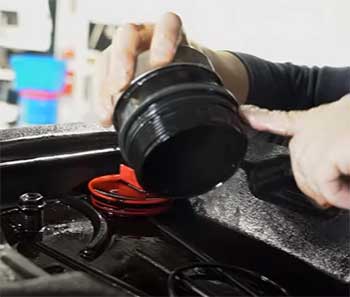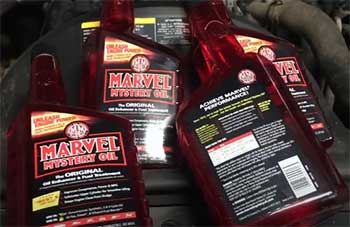Let’s explore why routine maintenance like oil changes costs substantially more for Volvo vehicles compared to mainstream brands.
We’ll analyze the proprietary specialized parts and fluids, complex European engineering, advanced technologies, smaller economies of scale as a niche automaker, and dealer network dynamics that contribute to Volvo’s inflated service pricing.
While the costs may appear exorbitant, there are legitimate reasons behind Volvo’s premium oil change fees versus other brands when following the factory recommendations.
Reasons For Volvo Oil Changes Being So Expensive
Here is a list of those reasons:
- Proprietary Parts & Fluids
- Labor Rates at Dealerships
- Engine Design Complexity
- Extended Oil Change Intervals
- Luxury Brand Tax
- Advanced Safety Features
- Use of Synthetic Oil
- Dealer Price Gauging
- Smaller Market Share
Let’s talk about them in detail.
- Proprietary Parts & Fluids

One of the main reasons Volvo oil changes cost more is that many models require proprietary oils and parts made specifically for Volvo vehicles. For example, many Volvo engines call for 5W-30 or 5W-40 synthetic oil that meets strict Volvo specifications.
This Volvo-specific synthetic oil can cost $10-15 per quart, compared to $5-6 for generic synthetics. In addition, Volvo oil filters, drain plugs, crush washers and other parts tend to be more expensive than their generic counterparts.
Using the specified Volvo fluids and parts is critical during an oil change to maintain the engine warranty.
- Labor Rates at Dealerships
In addition to pricier proprietary parts, Volvo dealerships also charge higher hourly labor rates compared to independent shops and quick lube chains. Dealers justify the higher rates by touting specialized Volvo technician training and expertise.
However, indy shops argue that aside from a few model-specific steps, there’s nothing extraordinary about changing the oil on a Volvo. Regardless, expect to pay $125+ per hour for oil change labor at the dealer, compared to $80-100 at independent specialists.
- Engine Design Complexity
Some Volvo engines are inherently more complex than average, which makes oil changes more labor intensive. Many Volvos have transversely mounted engines, meaning the engine is installed sideways in the chassis.
This configuration requires extra steps to access and drain the oil, including removing splash shields. Turbocharged and supercharged Volvo engines also require extra care when changing the oil filter to avoid oil starvation issues.
The added complexity increases service time and drives up labor rates.
- Extended Oil Change Intervals

Volvos are optimized to go longer between oil changes.
While most vehicles need oil swapped every 5,000-7,500 miles, many Volvos allow intervals of 10,000+ miles (or up to 2 years!).
To enable longer drain intervals, Volvo engines use high quality synthetic oil and premium filters.
But the improved durability comes at a cost – the optimized oil and components are more expensive.
So while you can change oil less often, each oil change costs significantly more. It’s a tradeoff Volvo owners must consider.
- Luxury Brand Tax
As a luxury European brand, Volvo can command higher prices for parts and service versus mainstream brands. Owners expect a premium experience when taking a Volvo to the dealer, similar to Mercedes, BMW, Audi, etc. Dealers pass this expectation onto the customer in the form of higher shop rates.
There’s also a prestige factor – driving a luxury car like a Volvo means being ready to pay more for maintenance compared to a Honda or Toyota. Of course, indy shops eliminate the luxury brand markup, but Volvo dealers can charge a premium.
- Advanced Safety Features
New Volvos boast advanced safety tech like collision avoidance, lane keep assist, adaptive cruise control, etc. These complex systems require specialized tools and training for service.
For example, recalibrating ADAS cameras after a windshield replacement can only be done by a Volvo dealer with the proper equipment.
Safety tech training and tools don’t come cheap, so dealers pass the costs to customers. More technology means higher oil change prices.
- Use of Synthetic Oil

Volvo engines are optimized to run only on full synthetic motor oil after break-in. Synthetic oil costs approximately 2-3 times more than conventional oil.
Multi-grade synthetics like 5W-30 and 0W-20 enable efficient cold weather starts while maintaining enhanced protection at operating temperature.
Synthetics also withstand higher temperatures and extended oil change intervals compared to conventional oil.
While the benefits are real, synthetic’s premium price directly contributes to inflated Volvo oil change costs versus brands that still use conventional oil in some models.
- Dealer Price Gauging
Some critics accuse Volvo dealers of egregious price gouging on basic maintenance like oil changes. They argue there’s no reason why routine services should cost exponentially more than other luxury brands.
For example, an oil change at a BMW dealer costs around $120 on average – far less than the $200+ charged by some Volvo dealers. However, others counter that Volvo’s costs are justified given their smaller economies of scale and lower sales volumes compared to German counterparts.
The truth is likely somewhere in the middle.
- Smaller Market Share
As a smaller luxury brand, Volvo has higher per-vehicle costs for things like technician training, specialty tools, parts inventory, etc. These expenses are spread across fewer total vehicles versus mainstream brands. Large brands like Toyota and Honda can amortize costs over millions of cars worldwide.
So while the markup on absolute profit per oil change may be similar, the percentage gain looks larger on lower volume brands like Volvo. Their niche luxury status contributes to higher service pricing.
- Dealer Network Size
Volvo has a smaller dealer network compared to mass market brands. Less competition among dealers enables higher service pricing across the network. With no other dealer options nearby, customers are often forced to pay the high prices at their local Volvo dealer.
Larger brands keep costs down through competition – if one dealer overcharges, customers go elsewhere. Volvo’s smaller footprint makes this challenging. Regional monopoly power lets dealers command high labor rates.
In summary, Volvo oil changes cost significantly more than other vehicles due to their specialized parts and fluids, complex engines, extended intervals, luxury brand status, advanced technology, smaller market share, and limited competition among dealers.
While the pricing may seem excessive, there are legitimate reasons behind the inflated service costs versus mainstream brands. Customers prioritizing lower costs can opt for independent specialists instead of the dealer.
But paying extra for factory parts, fluids and technician training helps ensure longevity on one of the most maintenance intensive vehicle brands.
- Higher Quality Filters

Volvo engines use high end oil filters that are significantly more costly than generic versions.
For example, the Volvo OEM oil filter may cost $25-40 versus $5-10 for a basic aftermarket filter.
Why?
Volvo filters contain finer filtration media to capture smaller particles, have stronger housings to withstand higher pressures, and use premium sealing components that hold up better over time.
The improved durability and particle removal allows the filters to last longer – often the full oil change interval. Cheaper filters may clog up or shed debris before the next oil swap.
So while the OEM Volvo oil filter is far pricier, its robust design and meticulous construction materials justify the added cost. Lesser quality filters simply don’t hold up as well.
- European Manufacturing
Volvo vehicles and parts are predominantly manufactured in Europe. The components then get shipped globally to regional distributors and dealers. This complex logistics chain makes Volvo OEM parts cost more by the time they reach your local dealer due to import duties, taxes, and shipping fees.
Made in Europe also contributes an intangible prestige markup – customers equate European engineering with quality.
Domestic US automakers have their own cost advantages by building vehicles and sourcing parts locally. The home field advantage keeps prices down.
But for Europeans like Volvo, building things thousands of miles away then exporting them overseas adds real costs to parts and service pricing. Oil filters, drain plugs and fluids imported from Sweden or elsewhere in Europe all contribute to inflated oil change costs.
- Service Reminder Systems
New Volvos have advanced service reminder systems that factor in driving conditions to indicate optimal service intervals. Sensors track engine runtime, temperature, RPMs and other parameters. The system then crunches the data and analyzes the oil condition to determine the ideal oil change timing for your specific driving profile.
These smart reminder systems certainly help optimize service intervals. However, the backend technology adds to the vehicle’s overall cost, which gets passed onto the customer. Service reminders require advanced telematics hardware, sophisticated software, and integration labor.
It’s another example of how complex systems in modern Volvos increase maintenance pricing. The high-tech oil change advisory features come at a literal cost.
Also Read: Oil Change At Dealership Vs. Valvoline.
Frequently Asked Questions (FAQ)
At a Volvo dealership, expect to pay $150-200+ for a basic oil change using factory recommended synthetic oil and parts. Independent Volvo specialists typically charge $100-150. Quick lube chains may be cheaper, but often use non-approved parts and oil.
Many Volvo engines require specific synthetic oil formulations and grades like 5W-30 or 5W-40 that meet strict Volvo specifications, so the oil is considered proprietary. Volvo filters, drain plugs, and other components are also specialized. Using Volvo factory fluids and parts is important to stay within warranty terms.
Volvos cost more to service due to specialized parts/fluids, complex transverse engines, extended intervals between services, advanced technology/safety systems, smaller economies of scale as a luxury niche brand, and less competition among their smaller dealer network.
Among luxury brands, Porsche and Land Rover tend to be the most expensive for routine maintenance like oil changes – often costing over $300 at the dealer. BMW, Mercedes-Benz and Jaguar are also up there. Mainstream brands like Toyota, Honda and Ford tend to be cheapest.
Wrapping Up
In summary, Volvo oil changes cost significantly more than other vehicle brands for several justifiable reasons.
Proprietary European parts and fluids, specialized technician training, advanced technology and safety systems, smaller economies of scale, and complex service logistics all contribute to higher pricing.
While the sticker shock may seem exaggerated, there are legitimate factors behind Volvo’s inflated oil change costs. Paying extra helps ensure the specialized maintenance required to maximize the longevity of these premium vehicles.

